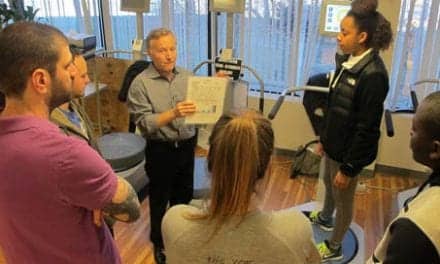Magnetic nanoparticles added to surgical cement used to heal spinal fractures could be guided directly to lesions near the fractures and provide targeted drug delivery, according to researchers at the University of Illinois at Chicago, in a study published recently in the journal PLOS ONE.
Nanoparticles bound to various drugs have been used to target drugs to specific locations or types of cells in the body. Most commonly, this is achieved by binding a minute amount of drug to the nanoparticle, which is designed to also bind to a specific type of cell, such as a cancer cell, the researchers explain, in a media release from the University of Illinois at Chicago.
“By modifying the kyphoplasty bone cement, we can both stabilize the spinal column and provide a targeted drug delivery system. This is a very promising technology as it has the potential to become a surgical option for patients with primary spinal column tumors or tumors that metastasize to the spinal column,” says Steven Denyer, a third-year medical student in the UIC College of Medicine and a co-lead author on the paper, in the release .
Using a pig model to study the magnetically-guided drug delivery system, Denyer and colleagues were successfully able to steer magnetic nanoparticles to the magnetic cement in the animal’s spinal vertebrae. In future studies to test the efficacy of this technique on treating spinal column tumors, the magnetic nanoparticles would be bound to tiny amounts of chemotherapy drugs.
“Our study provides an in vivo proof-of-concept that this novel drug delivery system can help treat underlying causes of spinal fractures in addition to providing structural support,” comments Abhiraj Bhimani, a fourth-year medical student in the UIC College of Medicine and a co-lead author on the paper.
[Source(s): University of Illinois at Chicago, EurekAlert]





